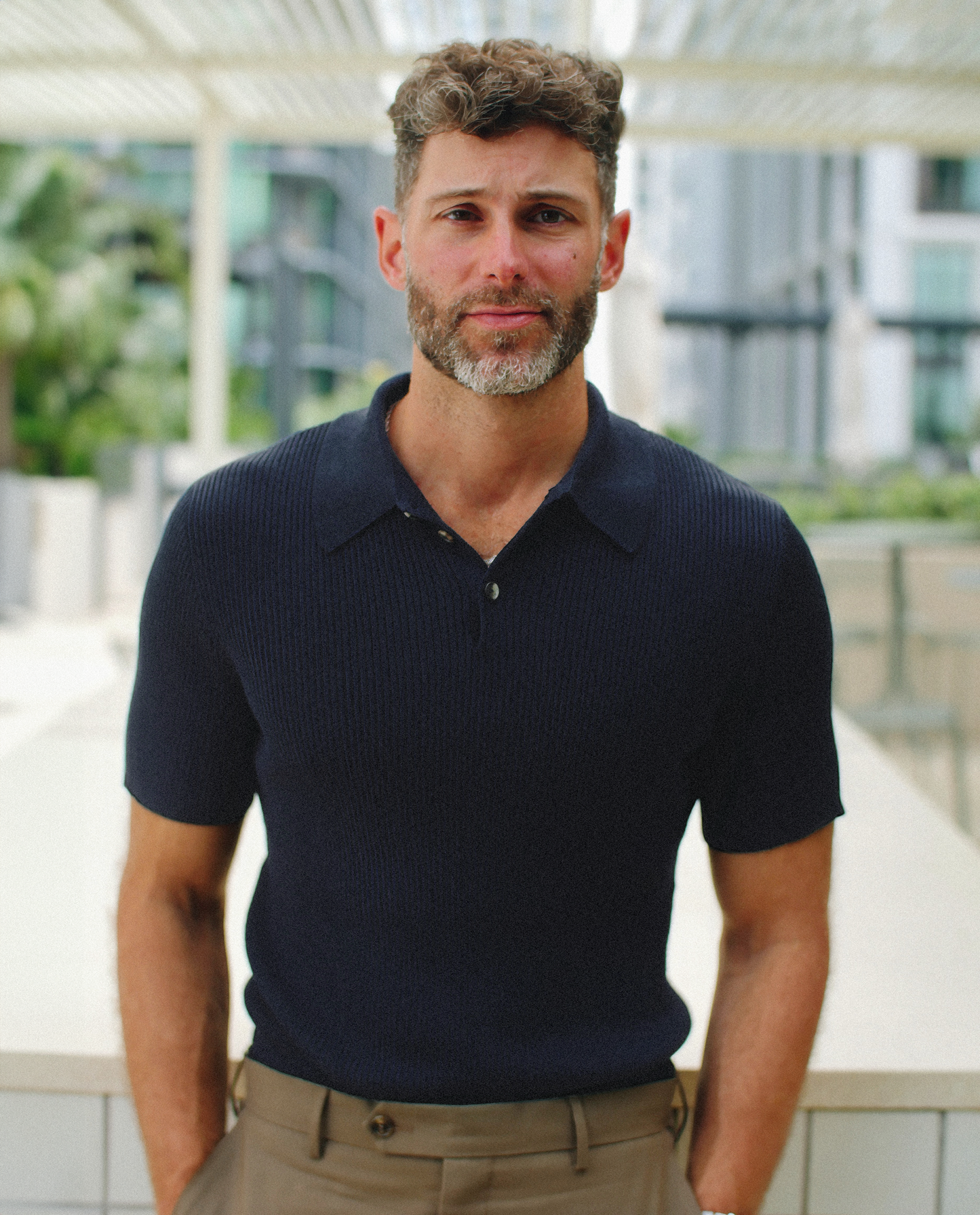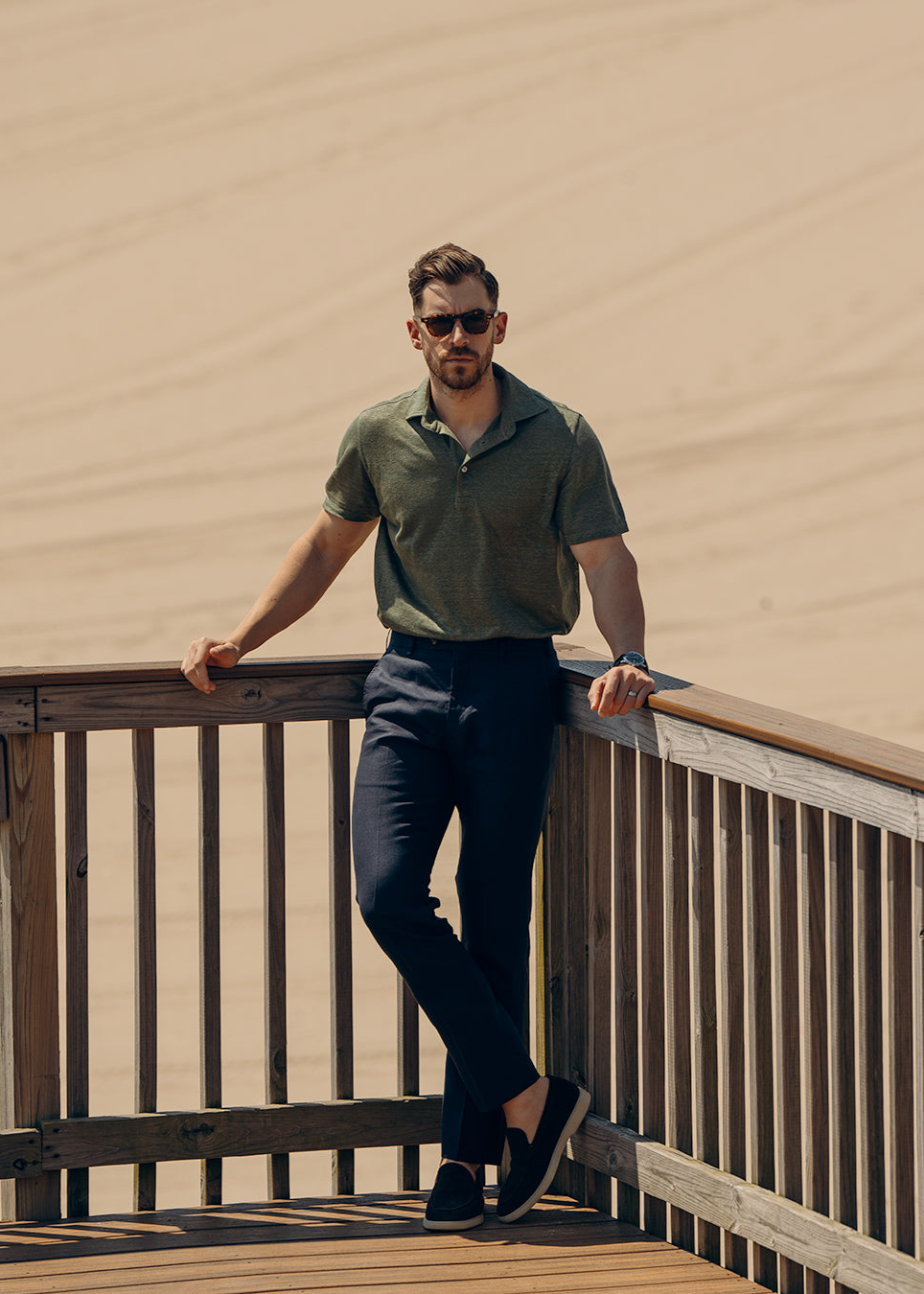As you all know, I am currently having a sale. I still have some killer shoes, shirts, and sweaters in stock. This brings me to my blog title " Let me help you..."
Sizing. Understanding your size is key.
When, I moved the majority of my production to Italy, I did it for two important reasons.
First, quality. The Italians know how to make a proper garment. If you can find the right factory you will receive generations upon generations of tradition, quality, and understanding of how to join up a proper garment. That garment can be a coat, a shirt, a pair of pants, the list goes on and on.
Second, price. Yes, price. It's cheaper for me to make a shirt in Italy than in the U.S..
When you add one and two together it is pretty much a no brainer.
Originally, when I gave the tailor my patterns, I was going to stick with my U.S. sizing (S,M,L,XL), however my shirt maker suggest that I do chest sizes. If I used chest sizes I could give my clients the best possible fit. Chest sizes allow for odd and even size measurements. S,M.L,XL does not. The S,M,L system is based on one standard so you will always have clients can't get a proper fitting shirt. If you use even and odd sizes you cover all of your bases.
Now let me help you-
It has recently come to attention that chest sizes and neck sizes confuse a lot of people.
I am writing this blog today to inform you this doesn't have to happen. Be free of fear!
I am going to give you a very easy solution. Get your best fitting shirt ( even if it sucks). Lay the shirt flat, as flat as possible.
Get a tape measure ( not a metal one) and measure the neck. In order to do this you open the collar and lay it flat. Looking at the inside of the collar you should see a knot where the button of your shirt is. This is the beginning spot for your tape measure. Keeping pressure on the tape measure go to the button hole. That number times 2 is your neck size. For example, I have a 16.5 neck, so when I measure my shirts the measurement is 8.25. Multiple 8.25 x 2 and it equals 16.5.
Now, for the chest. You basically do the same thing. Lay for you shirt flat, flat as you can. Take your tape measure and measure from one arm pit to the other. That measurement is your FINISHED chest measurement. Your finished chest measurement and your actual chest measurement are two DIFFERENT sizes.
It doesn't matter if you have a 38 inch chest or a 65 inch chest. What you want to focus on is your finished chest measurement.
For example. I have a 42 inch chest. When I measure one of my shirts, I measure from arm pit to arm pit and the measurement is 22. 22x2=44. 44 is my finished measurement and the perfect size for me.
Math does not lie. I think this is where people get confused.
The reason is this, you need extra fabric so that you may move around. Again, I have a 42 inch chest. If I wore a shirt that finished at 42 it would literally have to be painted on me.
Now, follow me.
Different companies use different grading systems. I use one inch for my Before-Dinner Shirts and two inches for my After-Dinner shirts ( I wear AD).
Typically, before the fitted shirt movement the average shirt was 4 to 6 inches in addition to your chest size. That's why everyone thinks Brooks Brothers shirts are so huge.
It also explains why WvG differs from Charvet or J.Crew differs from Band of Outsiders.
We all garde a little different. Except, when you use a S,M, L you can't be as exact if you are using chest and neck sizes.
If you look at my size charts everything will be self explanatory. Click Here for size charts.
What makes a great shirt? The simple answer is fit.
The neck and shoulders are key to a great fitting shirt. Then you work your way down. If your neck and shoulders don't fit correctly your shirt will look off.
Don't worry about waist, hips, and sleeves. The grade rules will take care of those measurements. Same with the chest.
What is a jacket sleeve?
If you have ever wondered why I harp about construction and the infamous "jacket sleeve" you are going to understand it now.
The typical high shirt is joined in 2 different ways. 100% Single needle construction or single needle with chain stitching. Both of these methods are good. Single needle requires more skill and it's more time consuming.
Chain stitching is usually done on the side seams, center placket, and sleeve heads. If your shirt is chain stitch it does't suck. It just means the factory opted for a cheaper less skilled operator. Chain stitching does have an advantage in two ways. One, it saves the maker a ton of money and two it's easier to match patterns and plaids.
When it comes to joining the shirts together chain stitching is the easiest, naturally. You line up your sides attach a part of your shoulder seam and zip up the arm. One motion.
This also applies with single needle except the seamstress loves slower and has to move and turn the shirt to do both side.
That's how a typical shirt is sew.
A "jacket sleeve" shirt is a 4 step process. All shirts before the industrial revolution were made this way. The sleeve and the body are closed and then joined. The sleeve is joined in one exact spot and the body is attached to the sleeve head at another exact spot. Both sides need to be exact. This laborious process is how the jacket sleeve is made. The pattern has to be exactly perfect.
The result is a more comfortable shirt. The jacket sleeve allows you not only more rotation but it also takes away the pressure under your arm like a typical shirt has. This helps when you are wearing a shirt with a high arm hole. It also allows you to move freely without your shirt becoming untucked.
This process is expensive so most designers opt out of it because they don't care about giving you the best product. They care about their bottom line. Obviously, that's not 100% true. It's not true because most shirt factory's don't even have the skill set to make such a shirt. This means a lot of shirt factories don't even offer such a service.
When a designer or shirt maker says they are doing their best, that might be true, but if they aren't giving you single needle construction with jackets sleeves they truly aren't giving you the best. There best is more likely to be in the marketing department and not the shirt construction department.
One can argue what is the best for hours and hours. It's subjective. I have left out a lot of other details that makes a great shirt great because to most people it really does't mean shit. Hand sewn button holes are great. Are they the best? No, not necessarily. Are hand sewn button holes nice to have? Of course they are, if you appreciate a hand made shirt. That doesn't mean the shirt isn't high quality. This also applies to a split back yoke, gussets, and bar tacking.
Hand work is always a nice touch. However, it's a nice touch. It's not crucial when making a nice high end shirt. I would argue a "jacket sleeve" is. The reason is fit and fit is key.
If you don't have a nice fitting shirt you simply wasted your money. I would rather buy a nice fitting shirt over a well made shirt ( errrr, I mean it still has to have nice fabric and details).
However, if the shirt is made of nice fabric, fits great, and is well made. That's the trifecta. It doesn't get any better than that and that's our goal here at WvG.
I will do my best to get video out for you so you can see the whole process. The "jacket sleeve" is not a gimmick. Specially, if you want a comfortable nice fitting shirt.
I hope helped.
Here is a nice guide written up awhile back that really will help you understand what you want in a dress shirt. This also applies to high end casual shirts but you can take or leave some of the options.



